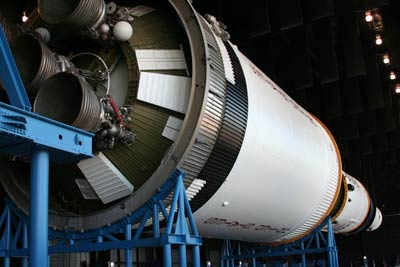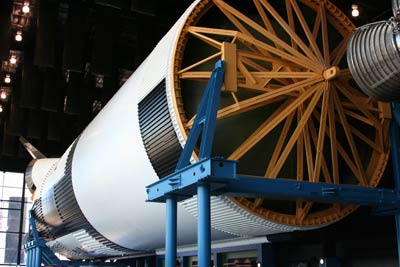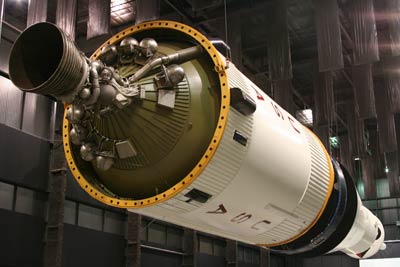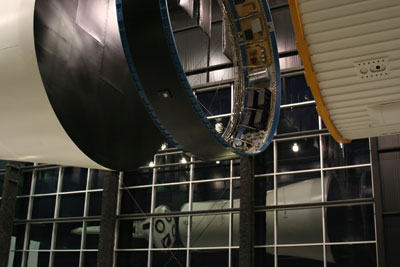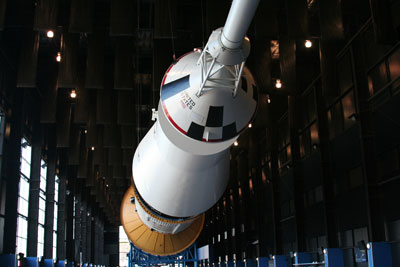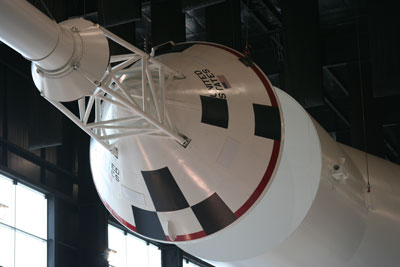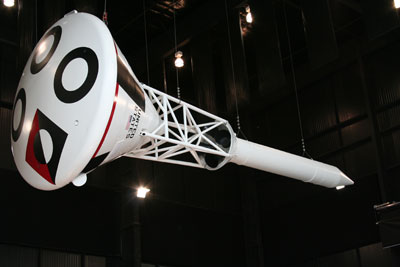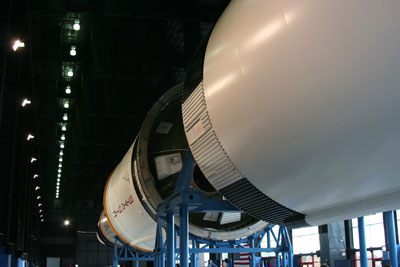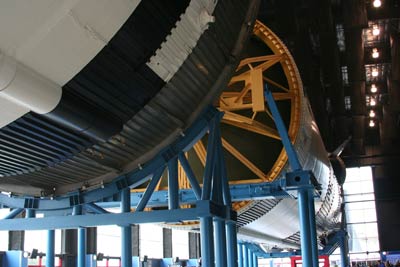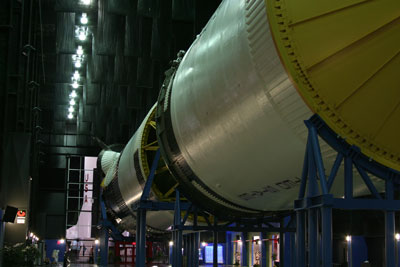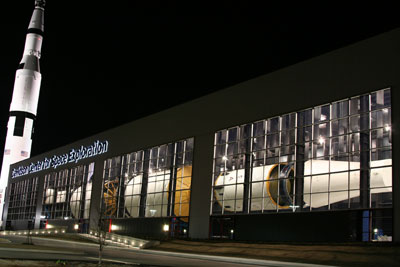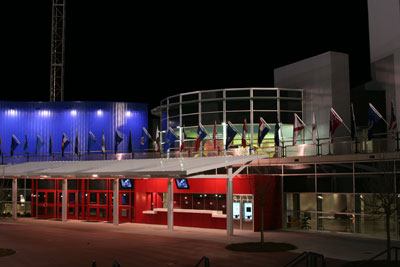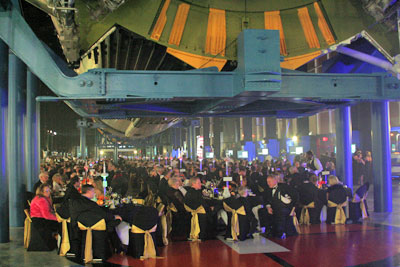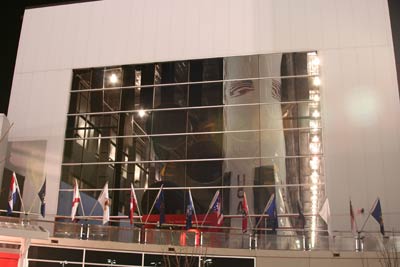|
|
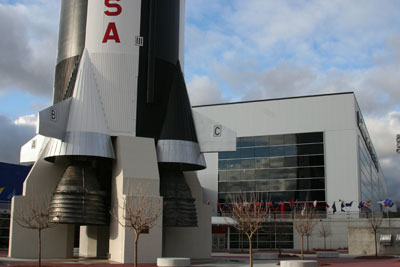 A replica of a Saturn V stands outside the new Davidson Center for Space Exploration at the US Space and Rocket Center in Huntsville, Alabama, where inside a newly-restored actual Saturn V resides. (credit: all photos © Dwayne Day) |
Fire and grace
by Dwayne A. Day
Monday, February 4, 2008
There are many icons from the Apollo era, but without a doubt the most impressive physical icon was the massive Saturn V rocket. Three of those rockets remain, although one of them, designated 500F, was never really a rocket but essentially a large mockup intended to assist in the development and checkout of ground equipment. That Saturn V, looking essentially identical to the actual flight models, long sat exposed to the elements outside the US Space and Rocket Center in Huntsville, Alabama, but was recently moved into a giant indoor facility that made its public debut only a few days ago.
Two other Saturn V’s containing more actual flight ready hardware are at the Kennedy Space Center in Florida and the Johnson Space Center in Houston. The Kennedy rocket was moved indoors in the early 1990s, housed in an impressive facility that could finally protect it from the weather and particularly the salt air that had corroded the vehicle over time. Last year the Houston rocket, which had suffered substantial degradation from Houston’s weather and pollution, finally moved indoors into what is designated a temporary structure, and which lacks the style and flash of the Kennedy facility. Now the Huntsville rocket has also moved indoors into a long building that is more like the Kennedy structure than the Houston one. That new facility, designated the Davidson Space Exploration Center, is structurally complete, but currently lacks the many Apollo-related displays that the Space and Rocket Center operators obviously intend to incorporate.
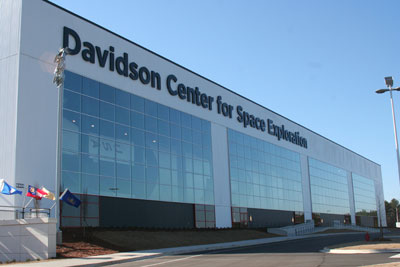 |
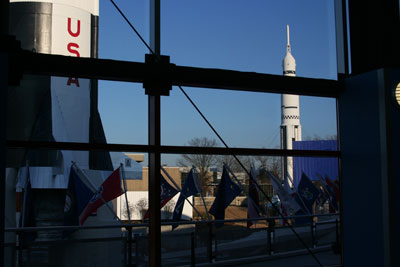 |
Although the Huntsville Saturn V was restored and preserved and moved indoors last summer, the Davidson Center was finally debuted to the public on Thursday, January 31, which was also the 50th anniversary of the launch of America’s first satellite into space, Explorer 1. The rocket was “presented” during a gala dinner ceremony that included 1400 guests seated underneath the giant rocket and included simulated rocket smoke and noise as well as laser lights. The Davidson Center is apparently not yet open to the public, although it is open to special groups and events.
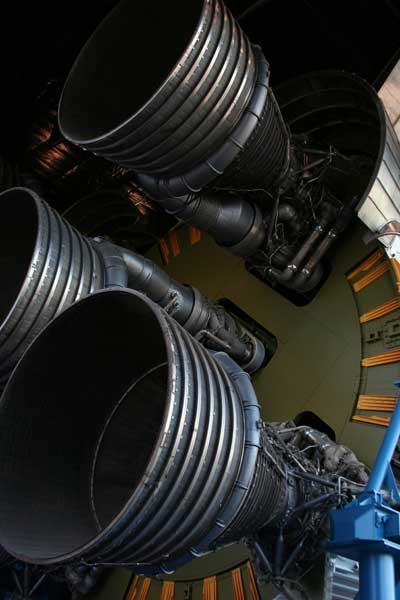 |
The Davidson Center’s main hall, holding the Saturn V, features a long window wall that makes the rocket visible from the outside and allows in ample sunlight. Some of the rocket stages are supported with steel structures, although others are hung from the ceiling. It is a beautiful and impressive way to display a difficult subject. The museum has not yet installed any exhibits to accompany the rocket, and is looking for corporate sponsors to pay for various portions. A map on a wall showed the preliminary exhibit plan. Presumably three objects to be moved into the hall are the museum’s Apollo 16 Command Module, the museum’s mockup of the lunar module, and an actual flight qualified lunar rover. All are currently housed in the museum’s aging, rather cramped main building.
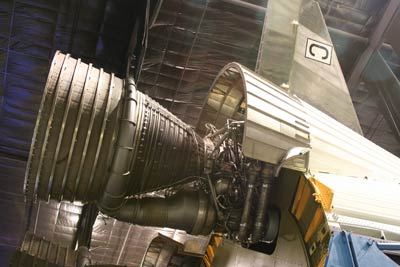 |
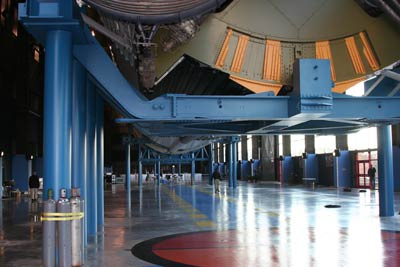 |
Hopefully museum operators will be able to emulate two other aspects of the well-appointed Kennedy facility: the banners hanging from the ceiling depicting each of the early American human space missions, and the walk-up platform at the front of the rocket. Currently it is impossible to get a good overall look of the Saturn V from inside the building because at ground level one cannot back up far enough to take it all in. A raised platform at the front could help greatly to impress upon visitors the overall construction of the rocket.
The building also features an exterior balcony that allows visitors to gaze up at the Saturn V rocket mockup outside that rises over 115 meters from the ground and which makes the Space and Rocket Center visible from great distances. Brilliantly lit at night, it provides visitors with a good idea of what the massive rocket must have looked like sitting on its launch pad in Florida awaiting the command to bring forth its fire and smoke.
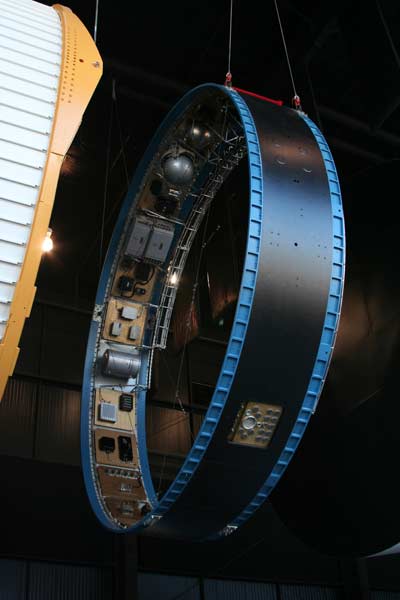 |
Although the main building is impressive, there are some aspects of the auxiliary facilities that detract from the overall structure. Fittings, fixtures, and paint in the bathrooms, auditorium, and lobby all have a rather cheap look to them, as if the builder skimped on the details. More disturbing are early signs of poor construction quality. In the main auditorium a metal safety cover had already fallen off of an electrical outlet, and the floor of the front lobby already has numerous cracks. Considering that the building has been complete for only a few weeks at most, and still has not been subjected to the wear and tear that it will experience from millions of visitors, these are not good signs.
But the Huntsville Space and Rocket Center has a building that it can be justifiably proud of and which will hopefully inspire future generations of rocket engineers, as well as commemorate the great work performed by tens of thousands of people who helped send Americans to the Moon underneath Saturn’s flames.
Dwayne Day can be reached at zirconic1@cox.net.
|
|





